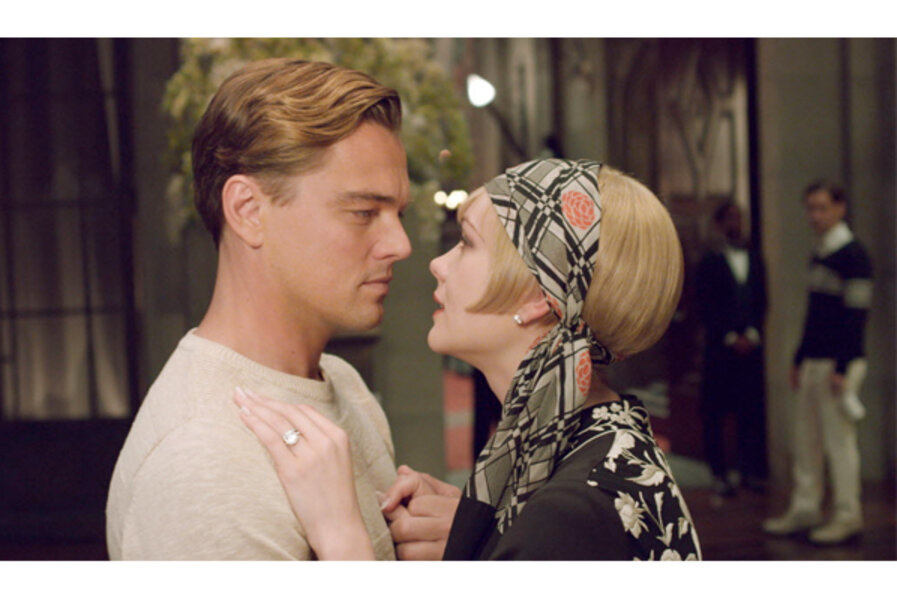'The Great Gatsby' is an over-the-top misfire
Loading...
If I were to choose the film director least temperamentally suited to adapt “The Great Gatsby,” heading my list would be Baz Luhrmann, the Australian impresario who gave us the assaultive “Moulin Rouge!” and “William Shakespeare’s Romeo + Juliet,” which was anything but the Bard’s.
F. Scott Fitzgerald’s great novel has been filmed five times before, most notably (egregiously?) in 1974, starring Robert Redford as the enigmatic Jazz Age bootlegger and world-class romantic Jay Gatsby. In that performance Redford seemed to be confusing “enigmatic” with “blank.”
One clear advantage to this Luhrmannized version is that, although Leonardo DiCaprio may be miscast, and although he appears at times not quite old enough to shave, at least he’s not drearily enigmatic. He has his many moods, dark and ethereal and extra crispy, and, given how Gatsby is constantly reinventing himself anyway, this makes sense.
Almost nothing else in this sputtering Roman candle of a misfire does. Fitzgerald’s sensibility is delicately nuanced, but there’s steel in his melancholy. With Luhrmann, everything, not just the parties but the intimate scenes, turns into Mardi Gras. And, to make matters worse, he’s filmed everything (pointlessly) in 3-D. For a director who has trouble making us care about anything in 2-D, this takes chutzpah.
But, I can hear you ask, why must Luhrmann serve Fitzgerald? Shouldn’t he be able to reinvent this material just as Gatsby himself engineered his own make-over?
Well, if Luhrmann had a sustaining vision to match Fitzgerald’s, then perhaps he could be forgiven for turning a great novel about the American dream into a heap of glittering shards. Or turning the Roaring ’20s into the Boring ’20s.
Luhrmann actually sticks fairly closely to Fitzgerald’s narrative, if not his spirit. Ensconced in his Gothic chateau in West Egg, Long Island, wearing pale pink suits that match up with his baby face, Gatsby pines for Daisy Buchanan (Carey Mulligan), the lost love who got away and whom he is trying to reclaim via his poor-relation neighbor Nick Carraway (Tobey Maguire), Daisy’s cousin. In a dubious switch from the book, Nick narrates the movie from a sanitarium, where he is evidently recovering from PGS – Post-Gatsby Syndrome.
Luhrmann is most in his element when he’s mounting party scenes, so he piles them on. It’s one thing to stage Jazz Age revels, quite another to drown us in them. There is no perspective to any of this, no sense of irony about what these rich gadabouts are gadding about. Luhrmann probably intends some kind of analogy with today’s boom-bust era, but he’s so entranced by wealth that the film becomes not a darkling look at the American dream but a vast tribute to conspicuous consumption.
And there is precious little jazz in this Jazz Age. Instead, Luhrmann has larded the soundtrack with hip-hop and warblings by the likes of Beyoncé and Andre 3000. His rationale is that jazz in Fitzgerald’s day was the hot new sound but, if heard today, would sound antiquated to modern ears. So why not hip-hop instead?
But isn’t it the job of an artist to imaginatively transport us into a bygone era instead of yanking us out of it in order to seem “relevant”? And doesn’t Luhmann know that hip-hop isn’t exactly the newest sound on the block anyway? It’s been around for decades. Might his rationale have more than a little to do with pandering to a younger demographic? I’m surprised he didn’t also have his revellers texting each other during all those blaringly loud parties.
None of these egregious choices would be fatal if, at its core, this “Gatsby” were intensely romantic. But Gatsby’s ardor for Daisy, despite some heavy contortions from DiCaprio, comes across as blah and one-sided – Daisy never quite seems to know what to make of him. (Her bully-boy billionaire husband, Tom, played by Joel Edgerton, certainly knows – worse than being a wife-stealer, Gatsby reeks of New Money). Equally blah is Nick’s sorrowing, hero-worshipy idealization of Gatsby and his “extraordinary capacity for hope.” We are meant to think by the end that the blasted Nick has somehow derived a valuable life lesson from Gatsby’s broken dreams.
So there you have it. “The Great Gatsby” isn’t simply a classic American text: In Luhrmann’s hands, it’s also the greatest self-help manual ever written. Grade: C- (Rated PG-13 for some violent images, sexual content, smoking, partying, and brief language.)







